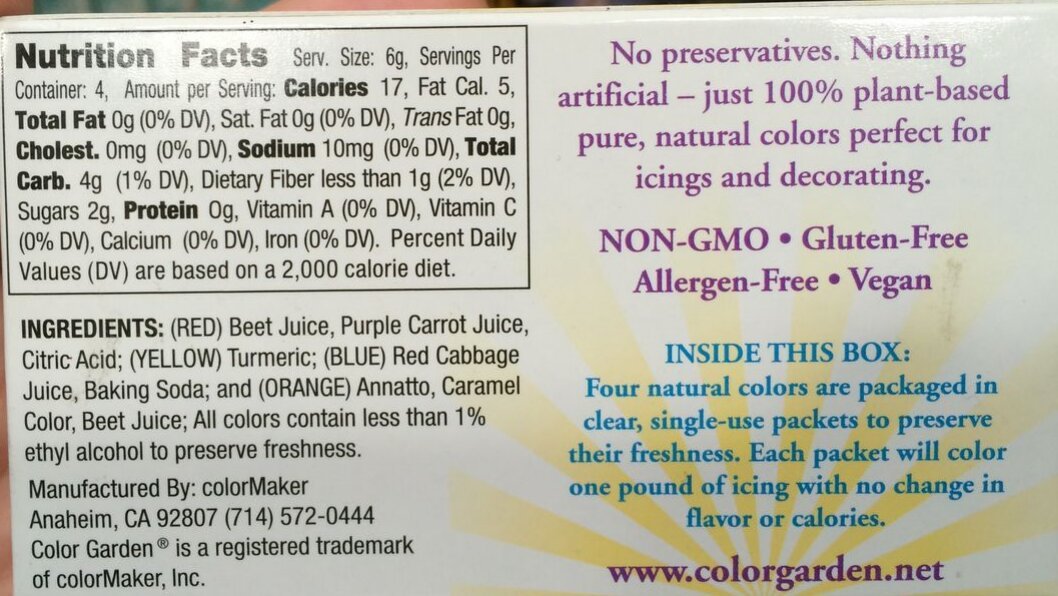I'm at the very beginning of some research into natural food colorings for my seminar on Prehistoric Cocktail Technology at Tales of the Cocktail this July in New Orleans.
Last week I was in my local hippie grocery store (this doesn't narrow it down much when you live in San Francisco) and saw a line of plant-based natural food colorings called Color Garden. I wanted to see if they declared what they used to make the colorings, and they did:
The colors used are:
- Beet juice
- Purple carrot juice
- Turmeric
- Red cabbage juice
- Annatto (an orange tree seed)
- Caramel color
I am playing around with some of these flavors at home, dehydrating ingredients to concentrate them and adding them to water or vodka to make them liquid again. I'll keep you posted.
But an interesting thing to note is that while some of the colors have added citric acid, others have added baking soda: an acid and a base. Luckily, the website explained why this is the case for natural colors (content edited for clarity):
Warm colors (red, orange, and yellow) prefer an acidic environment. You might consider adding lemon juice.
Cool colors (green, blue, and purple) prefer an alkaline environment. You might consider adding baking soda.
Watch out for cream of tartar (in frosting). Cream of tartar lowers the pH of the icing (makes it more acidic), which is good for shelf-life, but this may limit pure natural food colors to the “warm” colors: red, orange, and yellow.
This could be something to keep in mind if you/I want to use colors in cocktails, as they tend to be acidic rather than basic.

Leave a Reply